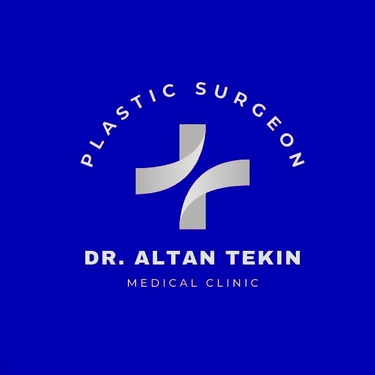CONTACT US: +90 544 138 84 64
Breast Augmentation Surgery
The best plastic surgeon at Breast Enlargement in Antalya.
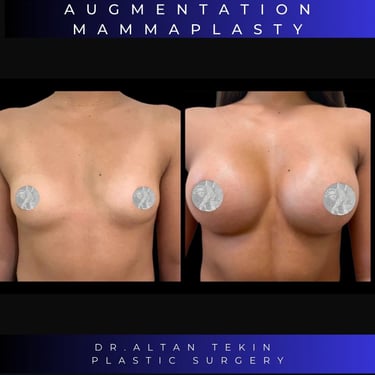
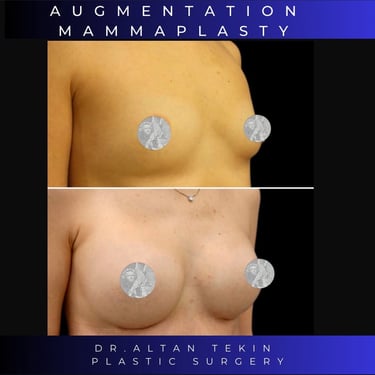
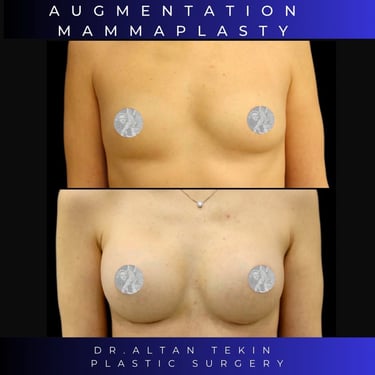
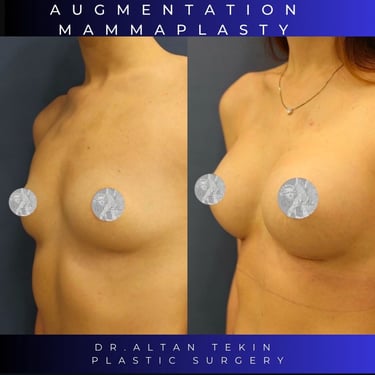
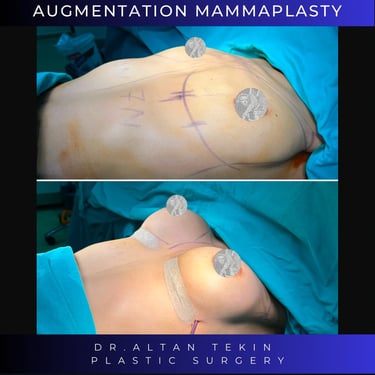
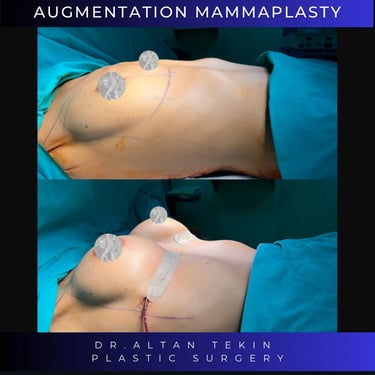
Breast augmentation surgery is a surgical procedure performed to increase the size of women's breasts. This surgery is usually preferred for aesthetic reasons and allows women to change breast volume, shape or fullness as they wish. Breast augmentation surgeries can be performed to improve breast aesthetics, balance body proportions or correct volume loss due to loss of breast tissue.
The most common method used in breast augmentation surgeries is the use of breast implants. Implants are made of artificial materials, usually silicone or saline solution, and are placed under the breast tissue or under the chest muscle. This increases breast size and fullness.
During surgery, the incisions for the implants are usually made in the crease under the breast, around the nipple or in the armpit area. The placement of the implant is determined by the patient's preferences, anatomy and the surgeon's experience.
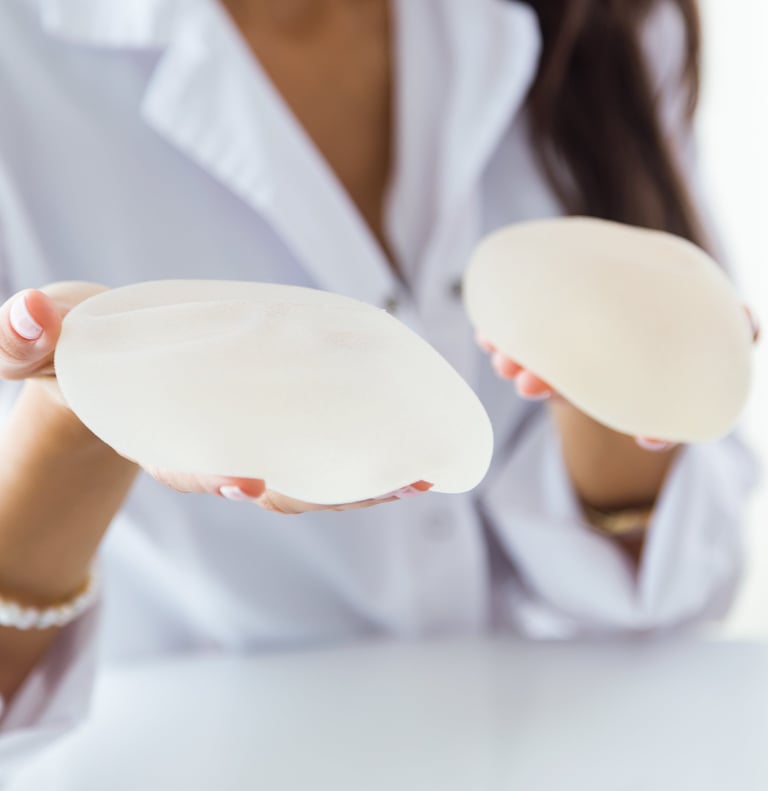

There are some important points that you should pay attention to after breast prosthesis (implant) surgery. These measures are important to facilitate the healing process, placement of the implants and optimal results. Here are the things to consider after breast prosthesis surgery:
Rest and Recovery: Adequate rest is important for the first few days after surgery. Avoid physical activities and rest for as long as the doctor recommends.
Pain and Medication Use: You may feel mild pain and discomfort after the surgery. Use the pain relievers your doctor recommends and follow the prescription directions.
Wound Care: It is important to keep the incisions and sutures clean and dry. Perform wound care regularly as recommended by your doctor.
Bandage and Support: Use specially designed bandages or bras after surgery for as long as your doctor recommends. These supports can support the placement of the implants.
Chest Movements: Limit chest movements as recommended by your doctor after surgery. Avoid heavy lifting or strenuous movements.
Physical Activities: You should avoid heavy physical activities after surgery. You should not do sports or exercise without your doctor's approval.
Smoking and Alcohol: Avoid smoking for at least a few weeks after surgery. Limit alcohol consumption.
Doctor Checks: Make regular checks recommended by your doctor. It is important to monitor the healing process and the condition of the implants.
Scars and Swelling: Post-operative scars and swelling are normal. It will decrease over time. Try to minimize these symptoms by using the methods recommended by your doctor.
Expectations and Questions: It may take some time for the results to become fully evident after the surgery. If you have concerns or questions, contact your doctor.
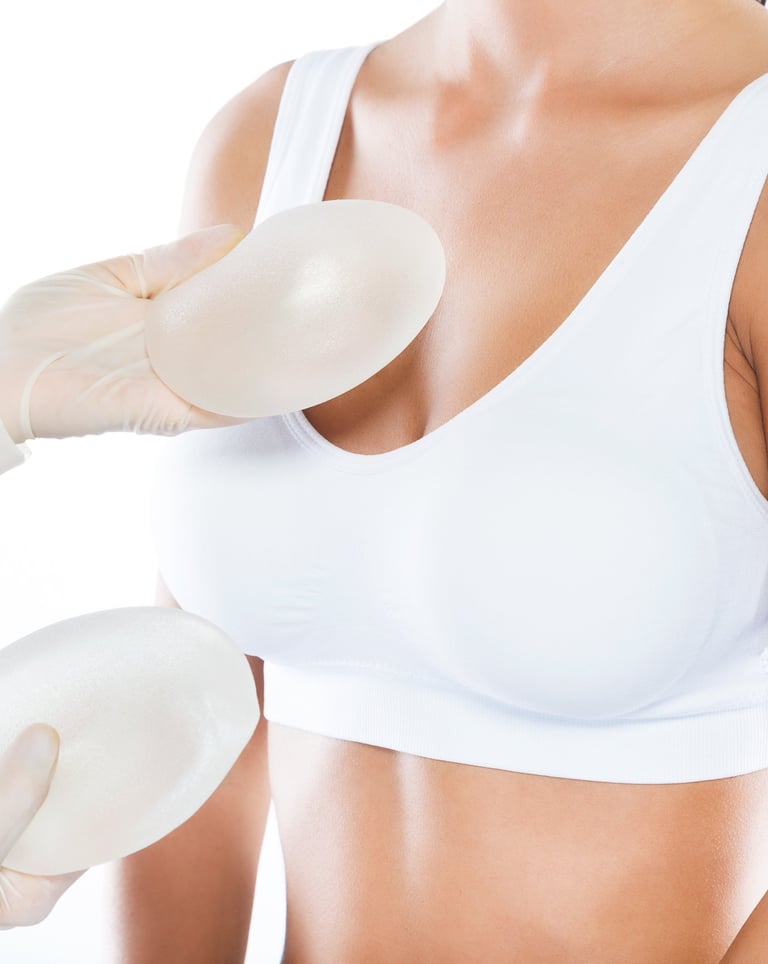

What are the complications of breast augmentation surgery?
Although surgical procedures such as breast augmentation are generally successful and safe, as with any medical procedure, there are potential risks and complications. Here are the possible complications of breast augmentation surgery:
Infection: As with any surgical procedure, there is a risk of infection at the surgical site. Infection may lead to removal of the implant or other interventions that require treatment.
Bleeding: Bleeding may occur during or after surgery. This can cause pain, swelling and bruising at the surgical site.
Implant Displacement or Leakage: Displacement of breast implants can lead to asymmetry. In the event of implant leakage, there may be a risk of leakage or spreading of the implant contents.
Capsule Contracture: The body surrounds the implant forming a natural capsule. However, sometimes this capsule may harden and cause deformation by putting pressure on the breast tissue.
Non-Aesthetic Results: Mistakes or undesirable results may occur about the size, shape, or placement of the implant. This may require implant revision.
Sensory Changes: After breast augmentation surgery, sensation changes (extreme sensitivity, tingling) may be experienced in the breast or around the breast.
Scars: There may be traces formed during the healing process of the incisions. The severity of scar formation may vary according to the patient and body type.
Asymmetry: One of the breast implants may be placed in different positions than the other, which can cause breast asymmetry.
Restriction of Movement: Chest movements should be restricted in the postoperative period. This can lead to some limitations in daily activities.
Anesthesia-Related Complications: Complications related to anesthesia (such as allergic reaction, respiratory problems) may occur during general anesthesia.
It is important that individuals considering breast augmentation surgery understand the risks and potential complications of the surgery and discuss the surgical procedure in detail with an experienced plastic surgeon. Risks can be minimized with surgeries performed under the supervision of a specialist doctor and with appropriate care.
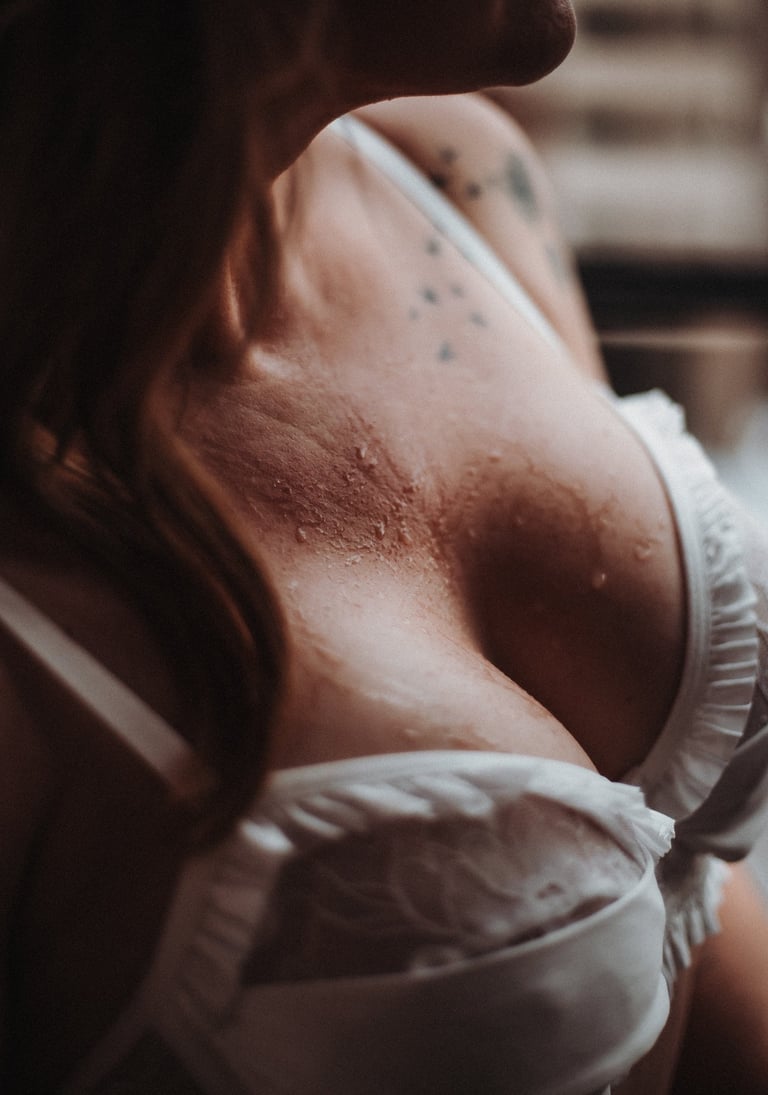

Caring for Yourself After Your Breast Implant Surgery
After Your Surgery
You will have a gauze bandage covering your incision (surgical cut). This bandage will be held in place by your bra or clear tape.
You may have a Jackson-Pratt® drain (JP drain) in place when you leave the hospital. This is a plastic drain that’s inserted in your chest to drain the fluid from your surgery. The drain is usually removed 1 to 2 weeks after your surgery. Your nurse will teach you how to care for it before you go home.
Your nurse will give you the resource Caring for Your Jackson-Pratt Drain or you can search for it on mskcc.org/pe.
You will get a prescription for pain medication and antibiotics.
If you will be traveling by car, place a small pillow or towel between the seat belt and your reconstructed breast. The skin over your reconstructed breast is often thin and can be scraped easily. This can lead to infection.
Clothing
Wear a soft supportive bra for 6 weeks after your surgery, even while sleeping. You may remove your bra when you bathe or shower.
Don’t wear a bra that has underwire.
Caring for your chest
If you have a bandage that’s held in place by your bra, remove it and replace it with new one at least once a day until your follow-up appointment. At your follow-up appointment, your doctor or nurse will tell if you can stop.
If you have a bandage that’s held in place by a clear plastic bandage, you can remove the bandage 48 hours (2 days) after your surgery.
To create a natural fold under your breast, your doctor placed sutures (stitches) under your skin that you won’t see. They will dissolve on their own and don’t need to be removed. These sutures may cause you to feel a pinching or pulling sensation and can be painful. If you have any pain, take your pain medication.
For the first 48 hours after your surgery:
You may have a slight fever. Your temperature could reach 101° F (38.3° C).
The skin around your reconstructed breast may become pink or red.
These aren’t signs of an infection. They’re signs that your body is adjusting to the implant. Call your doctor if the redness or fever doesn’t get better 48 hours after your surgery or if your temperature gets higher than 101° F (38.3° C).
Medications
Your doctor will give you medication to treat your pain as needed.
Your doctor will give you an antibiotic. Take the antibiotic as it’s prescribed.
Showering
Don’t shower or wet your bandage for the first 48 hours after surgery.
Talk to your doctor about showering with your JP drain in place.
Avoid baths, hot tubs, and swimming pools for at least 6 weeks after your surgery.
Talk with your doctor or nurse before you use deodorant, lotion, or cream anywhere near your incision.
Restrictions on physical activity
You can resume most activities right after your surgery, but below are some things you should avoid:
Don’t do any exercise that will tighten your chest muscles. If you have any questions about this, talk with your doctor or nurse.
Don’t lift any objects heavier than 5 pounds (2.3 kilograms) for 4 to 6 weeks.
Check with your doctor or nurse before starting heavy exercises, such as running, jogging, or lifting weights.
When you exercise, wear a soft and supportive bra.
What types of breast implants are available?
Saline breast implants
Saline breast implants are filled with sterile salt water. Should the implant shell leak, a saline implant will collapse and the saline will be absorbed and naturally expelled by the body.
Saline breast implants provide a uniform shape, firmness and feel, and are FDA-approved for augmentation in women age 18 or older.
Gummy bear breast implants
Form-stable implants are sometimes referred to as gummy bear breast implants because they maintain their shape even when the implant shell is broken.
The consistency of the silicone gel inside the implant is thicker than traditional silicone gel implants. These implants are also firmer than traditional implants.
Shaped gummy bear breast implants have more projection at the bottom and are tapered towards the top. If a shaped implant rotates, it may lead to an unusual appearance of the breast that requires a separate procedure to correct.
Placement of gummy bear implants requires a slightly longer incision in the skin.
Structured saline breast implants
Structured implants are filled with sterile salt water, and contain an inner structure which aims to make the implant feel more natural.
Round breast implants
Round breast implants have a tendency to make breasts appear fuller than form-stable implants. Higher profile options can achieve even more projection.
Because round implants are the same shape all over, there is less concern about them rotating out of place.
Silicone breast implants
Silicone breast implants are filled with silicone gel. The gel feels a bit more like natural breast tissue. If the implant leaks, the gel may remain within the implant shell, or may escape into the breast implant pocket. A leaking implant filled with silicone gel will not collapse.
If you choose silicone implants, you may need to visit your plastic surgeon regularly to make sure the implants are functioning properly. An ultrasound or MRI screening can assess the condition of breast implants.
Silicone breast implants are FDA-approved for augmentation in women age 22 or older.
Smooth breast implants
Smooth breast implants are the softest feeling. They can move with the breast implant pocket, which may give more natural movement.
Smooth implants may have some palpable or visible rippling under the skin.
Textured breast implants
Textured breast implants develop scar tissue to stick to the implant, making them less likely to move around inside of the breast and become repositioned.
Texturing offers some advantage in diminishing the risk of a tight scar capsule.
*It's important to note that breast implant-associated anaplastic large cell lymphoma (BIA-ALCL) occurs most frequently in patients who have breast implants with textured surfaces. For more information on BIA-ALCL, visit our BIA-ALCL Summary page. Discuss all benefits and risks related to your breast implant procedure with your board-certified plastic surgeon. Understanding all potential risk factors will help with better decision-making that is best for you and your health.
Frequently asked questions
Is there a non-surgical breast enlargement method?
Yes, there are non-surgical breast augmentation methods. Some people may prefer non-surgical options to avoid breast augmentation surgery or those who have a history of surgery. These methods may include different options such as breast fillers or injections, vacuum devices or hormone therapy. Breast fillers or injections increase breast volume by injecting special fillers into the breast tissue. Vacuum devices, on the other hand, apply negative pressure to the breast tissue to encourage breast growth. Hormone therapy, on the other hand, targets the breast augmentation process by using natural or synthetic hormones. The effects of these methods may vary from person to person, so it is important to determine the most appropriate method by consulting a specialist.
How does your product/service work?
We offer a [brief explanation of how your product or service helps your customers]. Our process is [simple/efficient/convenient] and [positive adjective] for you.
How much does it cost?
Our pricing varies depending on [what factors affect your price]. We offer a variety of options to fit your needs and budget. Please visit our [pricing page/contact us] for more information.
Do you offer [specific service inquiry]?
Unfortunately, we don't currently offer [specific service inquiry]. However, we do offer [alternative service] which might be helpful.
How can I contact you?
You can reach us by [phone number/email address/contact form link]. We are always happy to answer your questions.
